Cologne, Germany
Art as Liturgy
Paul Thek and the Others
Annual exhibition of the museum’s own collection
15 September 2012 to 15 August 2013
This exhibition takes its title from a quotation by American artist Paul Thek (1933-1988), of whose work Kolumba Museum holds one of the largest collections: ‘Art is Liturgy, and if the public responds to their sacred character, then I hope I realized my aim, at least at that instance.’
In this exhibition historical, religious art and artefacts are curated in dialogue with contemporary works addressing themes of liturgy.
The exhibition questions how art reacts with liturgy, which itself uses artistic means. ‘To engage in play before God - to be a work of art, but not to create it - this is the innermost essence of liturgy’, wrote the theologian and priest Romano Guardini in 1918.
The exhibition is displayed in the beautiful Kolumba Museum in Cologne, Germany. The building was designed by Swiss architect Peter Zumthor and evolves seamlessly from the late gothic ruins of St. Kolumba Church. The largest room of the building encompasses the 200-year-old structure and houses the original church ruins. Above this sit the gallery spaces.
The gallery is filled with beautiful objects curated in relation to each other. One room that stand out is Room Six, which explores themes of the body and action. On the floor lies Paul Thek’s Fishman (1969) a full-length latex cast of the artist’s own body as a poetic self-portrait beyond the concept of life and death. On the walls Rebecca Horn’s energetic line drawings On the cross (2004) use the body as a template. Her works were made in Mallorca and are to be seen in the context of the impressive Good Friday procession on Calvary there.
In Room Ten, Mira Bergmuller’s installation What is sacred to me? (2010) allows the viewer to sit with her figures of wood, plaster, bronze and clay and listen to her video sermon.
In the South Tower a sixteenth century limewood Madonna floats above while twenty-eight engravings by Paul Thek explore his individual iconography with motifs such as Beau Jangels, Tarbaby, and Tower of Babel.
The curating of the works in relation to each other and to the space is extremely skillful. I process through this exhibition. I am made aware of the performative quality of the works of art. I stop repeatedly to feel the atmosphere resting in the soft lighting. I call out to hear my voice echoed back in the soaring high ceilings of one room, I reach out in the dark to stroke the black velvet walls of another. In this exhibition all senses are alive.
The beauty of this building is that in the museum it retains the essence of the church that was lost in the war and allows the works on display to make reference to the spirituality of this site, giving an idea of the aura the works exuded in a liturgical context. It is said that art galleries are the new religion. I think Kolumba shows art and religion have always been inextricably linked and continue to be so.
Anja Funston
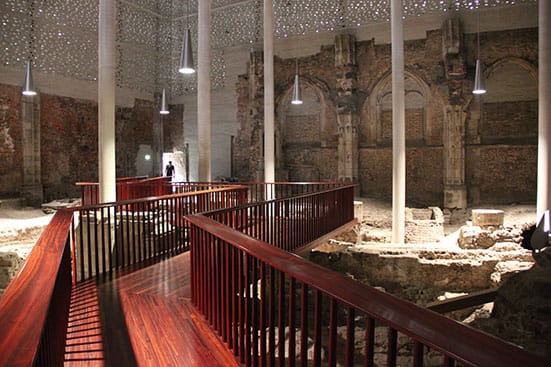
Excavation site of St. Kolumba Church. (Photo: A. Funston)
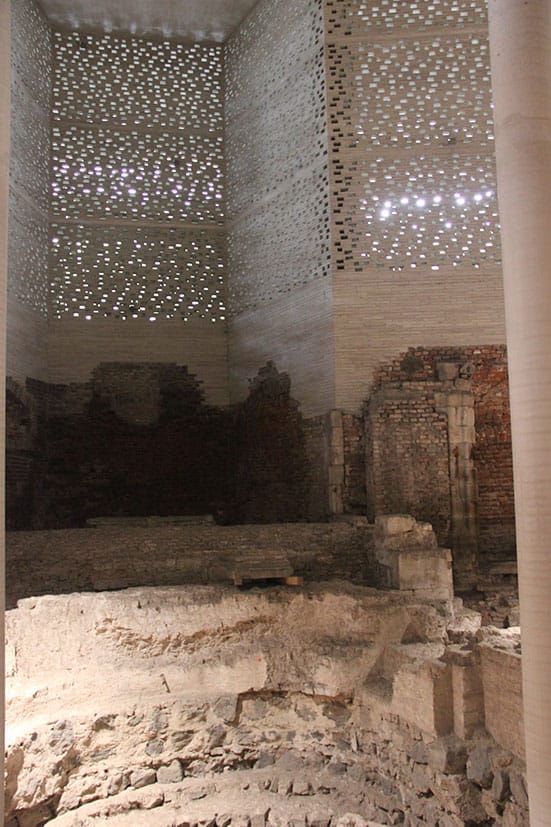
Zumthor filter brick work and ruins. (Photo: A. Funston)
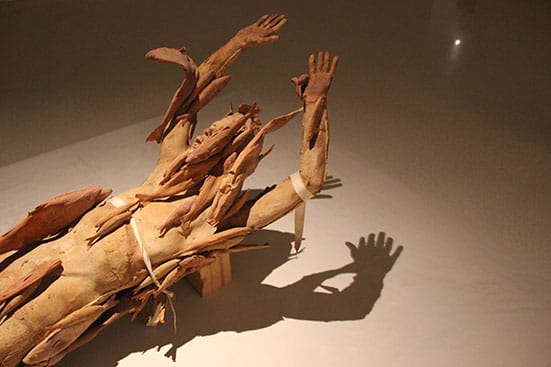
Paul Thek Fishman (1969), latex. (Photo: A. Funston)

Mira Bergmuller installation What is sacred to me? (2010), (video, figures of wood, plaster, bronze and clay) (Photo: A. Funston)
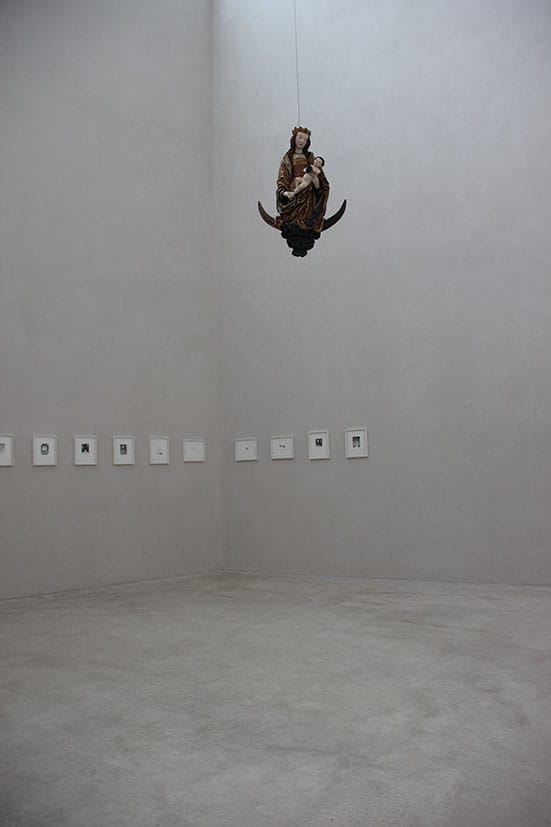
Paul Thek, Untitled, 28 engravings, (1975/1992) and 16th Century Madonna on a crescent moon. (Photo: A. Funston)
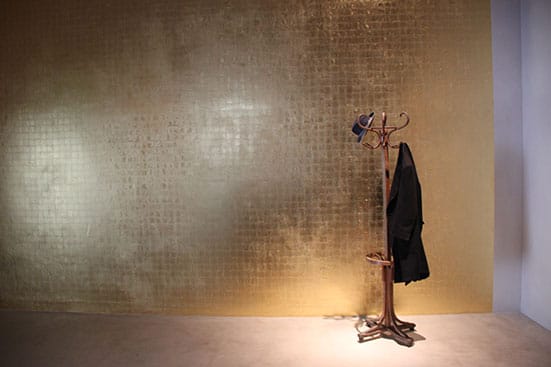
Jannis Kounellis, Tragedia Civile, (1975), Gold leaf wall, coat stand, hat, coat, oil lamp. (Photo: A. Funston)